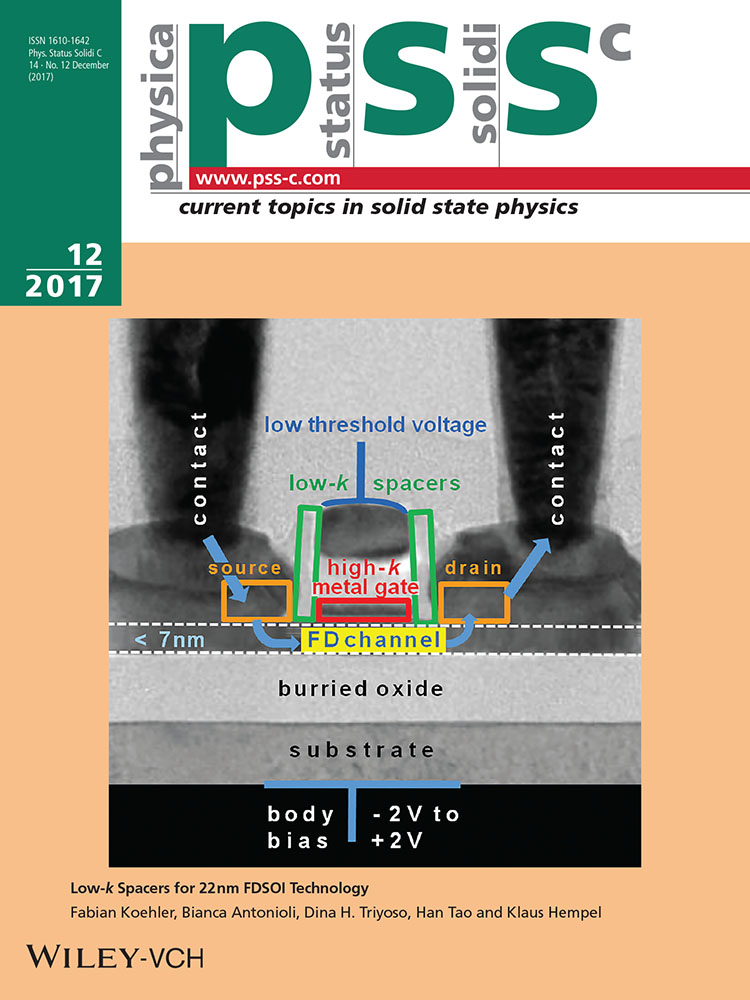Study of complex free-carrier profiles in hydrogen implanted and annealed silicon
Abstract
Czochralski silicon doped with boron was implanted at room temperature with 130 keV H2-ions at a high dose of 4 × 1016cm–2. The specimens were annealed at a temperature of 450 °C for 10 h in argon ambient prior to Schottky contact formation. High frequency (1 MHz) capacitance–voltage (C–V) measurements and C–V profiling in the temperature range 80–370 K were performed to characterise electronic properties of the samples. Control samples, i.e., as-implanted and as-annealed samples were also studied for a reference. It has been found from a polarity study that the sub-surface layer related to implantation has p-type conductivity. The C–V profiling has revealed that carrier profiles consist of two distinct regions if the implanted samples were additionally annealed. In the region related to the ion range the apparent carrier profiles show a sharp peak followed by a plateau in the region that extends far beyond the range of the transport ions. The results presented in this article give the experimental evidence that the spatial profiles of defects for high-dose implants have a sharply falling edge moving deeper into the sample. Particular features of the profiles presented here, can be used to explain unusual properties in C–V(T) characteristics observed for the heavily damaged Si.




